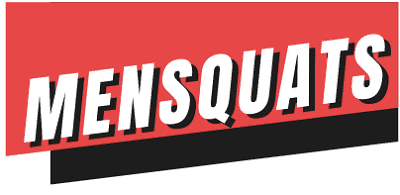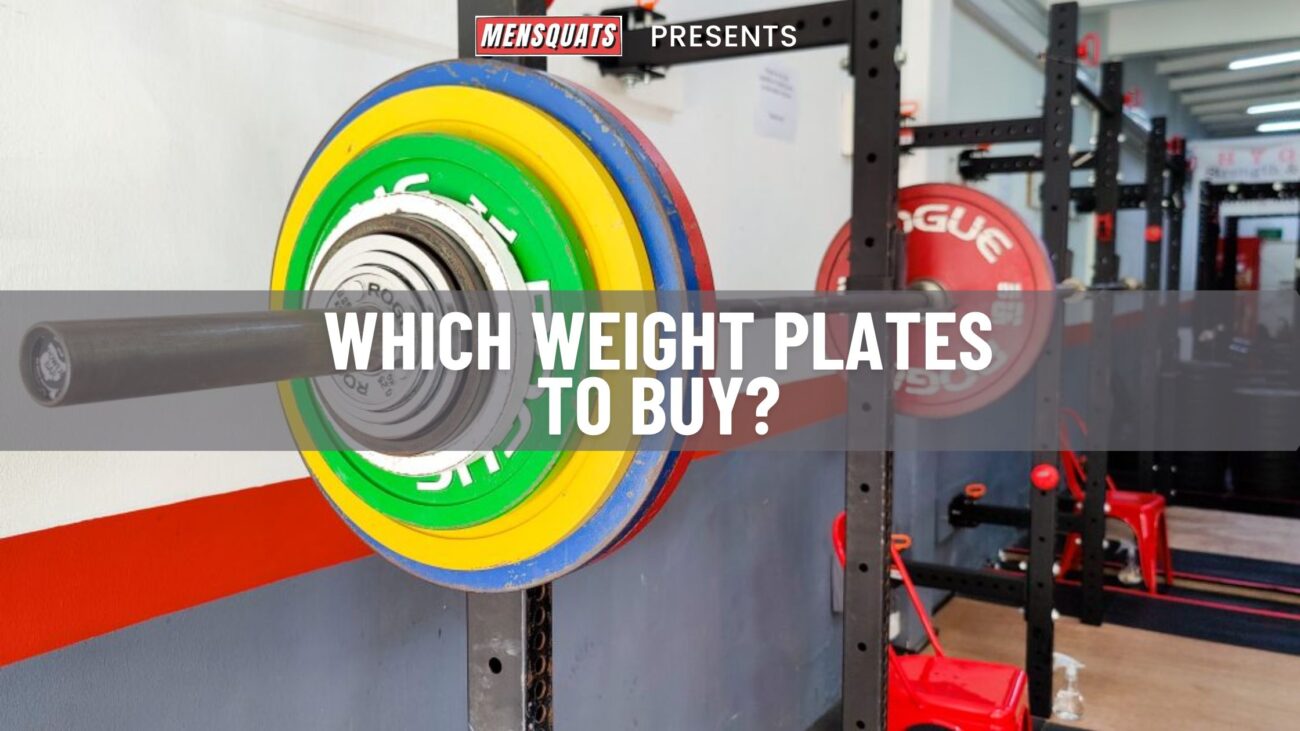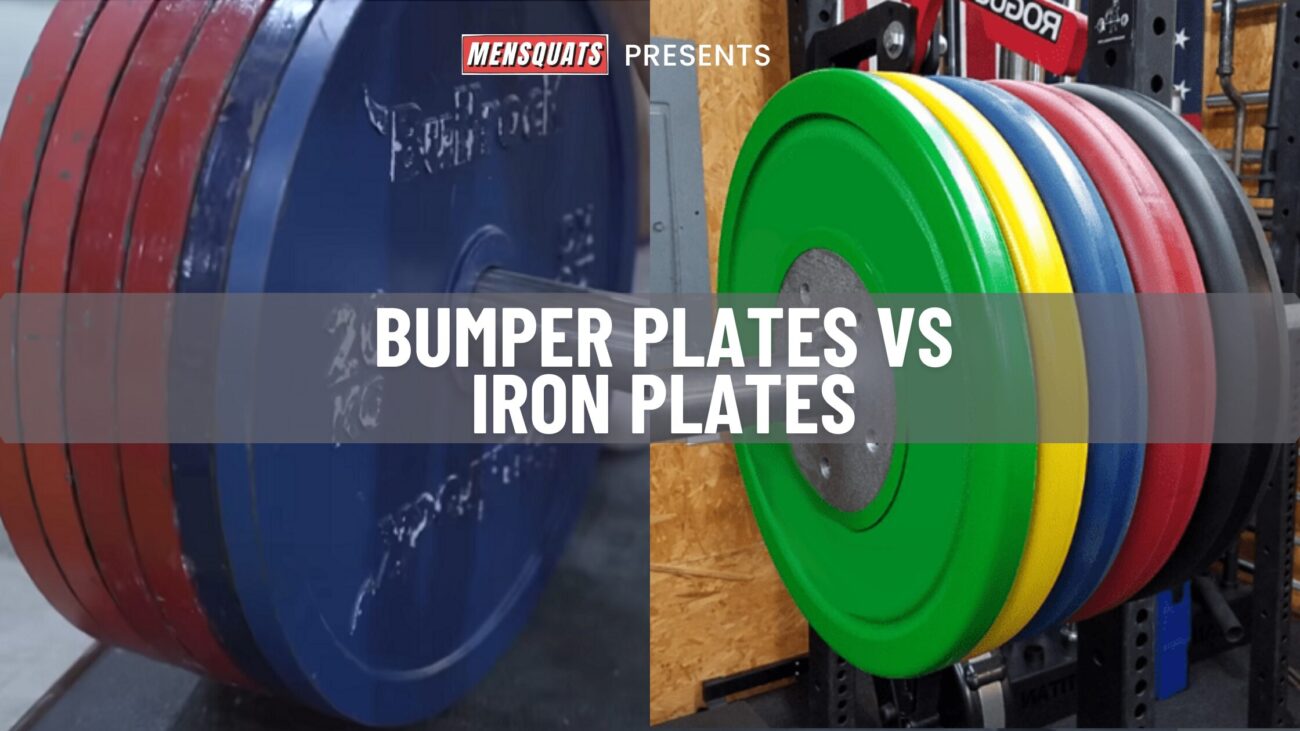3 Reasons Why You Shouldn’t Rely On Cheap Weight Plates Set Anymore.
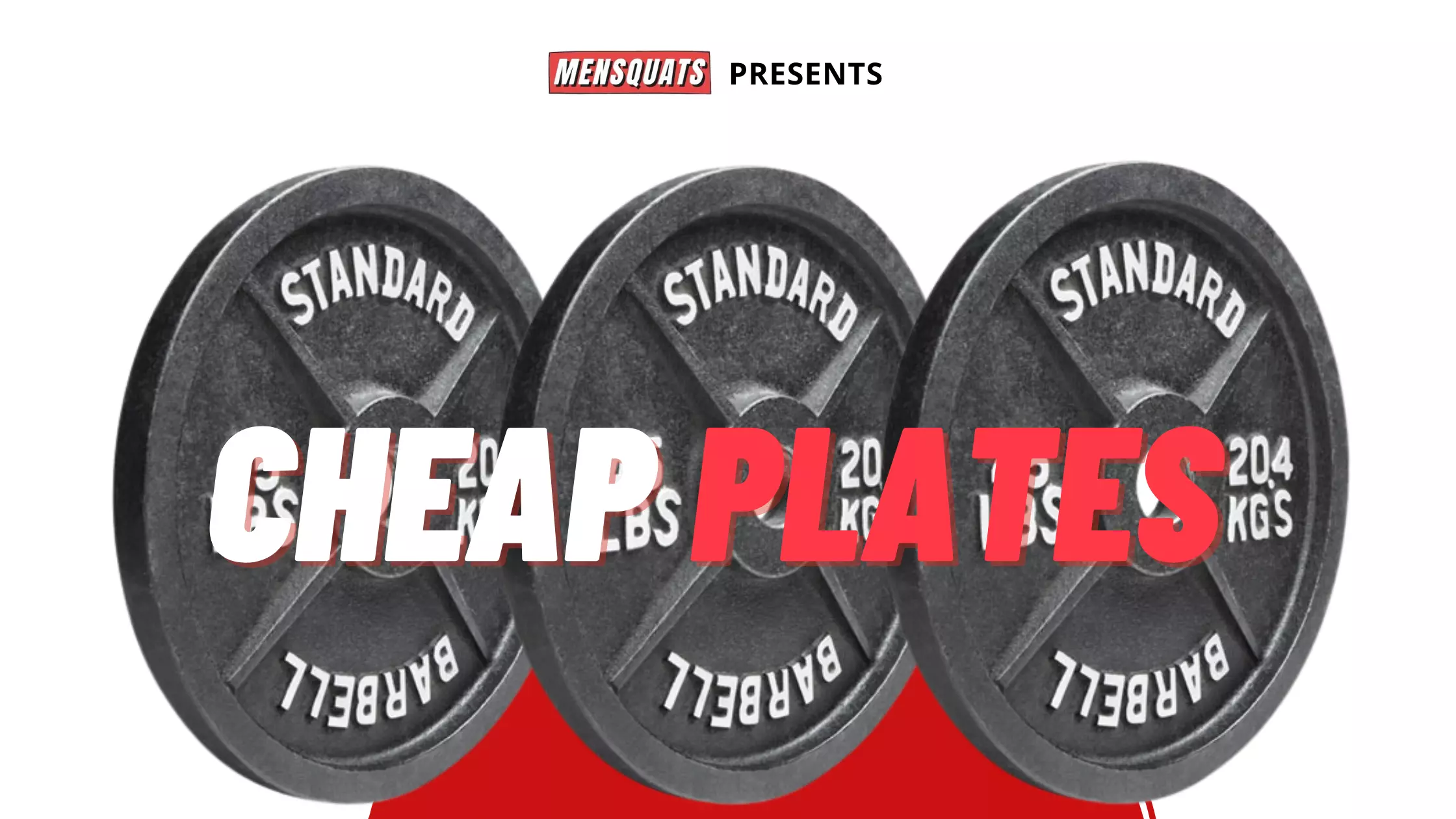
What's the first thought we get when we get to spend big? Umm should I try cheap instead! But the best advice goes differently. Today we are going to discuss whether buying cheap weight plates set is a good investment or a Big Rip Off!!
Because believe it or not, “All weights are not created equal” and I say that fully aware that I spend way too much money on gym equipment. 😃
And having the experience of posting a lot of this stuff online and dealing with commentary, I know a lot of people are of the opinion that weights don’t really matter.
So much so,
There’s no reason to spend a lot of money on, let’s say- (A set of forty-fives when it’s still gonna weigh as much as a cheaper pair of 45’s).
❌ Unluckily it is not the case, but that being said, it doesn’t always matter for everybody based on your own preferences, your own likes as well as your own budget.
Even though these things may not apply to you.
But I think it’s important to keep top of mind when deciding on plates as there are some trade-offs with going on the cheap route.
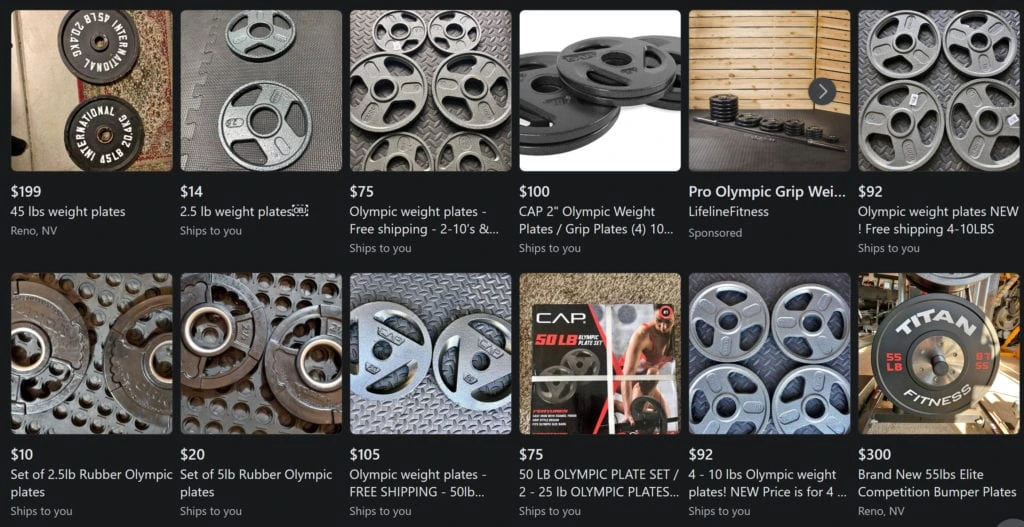
Which Cheap Weight Plates Set People Buy on Sale?
Here, our focus is on metal plates like cast-iron plates, which are the cheapest plates available in most cases. 😃
There are also machined and/or milled plates. However, those are more expensive and also more accurate.
✔️ Finally, there are calibrated plates that are even more expensive but even more accurate.

There are other kind of plates too, like bumper plates. But we haven’t talked about them for at least in this blog.
Logically, most of us favor buying a BRAND NEW because going to the secondhand market changes things a little bit.
Which I’ve earlier talked about in my blog: Is it good to buy second-hand gym weight plates?, but that’s a different discussion because there’s really a wide variance of what you can get on the second-hand market and it really depends on your own location.
➡️ For cast-iron cheap weight plates, there are a couple of things to look at.
These are in no particular order because it really depends on what’s of most importance to you?
3 Things You Must Know About Cast-Iron Cheap Weight Plates?
Let’s talk about some of the pain points/ or say difficulties you may face when you buy cheap weight plates:
Note: The images shown of plates with embedding “Standard Barbell” aren’t the cheap plates we are referring to. (Unluckily, we have no photos at a time, and images available online aren’t suitable to use.)
These are the highest quality cast-iron weight plates you must consider buying when you have a budget to afford only cast-iron/ or steel plates.
#1. False Diameter of The Plate:
A standard Olympic plate being a 45 pound or a 20 kg weight set. We’ll just assume that because that’s also going to adhere to the 25 kilos/55-pound weights or the 100-pound weights, they should all have a standard diameter of around 450 millimeters, which is about 17.7 inches in all plates.
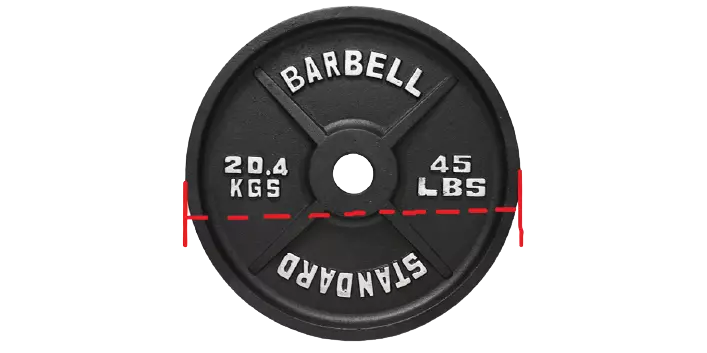
Make sense?
This is important for these plates and probably not the other ones because these are the plates that are going to be touching the ground, so think of things like deadlifts, Pendley rows.
▶️ If you’re doing Olympic weightlifting and working on your snatch, which you probably wouldn’t be using these cast-iron plates for, but anytime the barbell is on the ground, those are the plates that are probably making contact.
The chances are you’re not gonna have like a 5-pound plate and be doing deadlifts, so the standard plate here sizes that we’re talking about is 450 millimeter 17.7 inches or so.
✔️ This is important because, with a lot of the cheaper plates which we’ll find, the diameter is not as much in fact, it can be as little as 15 inches, so you’re losing about 2 inches.
2 Major inches!!
Which again talk to any guy out there and that’s quite a significant amount.
Think how that translates to some of your lifts that you do from the floor, especially Deadlifts.
If you’re a power lifter 🏋️ then deadlifts are one of the main compound movements, you have to do. And if you are now 2 inches closer to the ground because your plates are not made close to the standard diameter as they are supposed to be.
Then it is not only putting you closer to the ground. They’re also putting the barbell closer to the ground, which means it’s gonna be a lot more difficult to pull from the floor.
Some people might spin this and say that “hey I’m close to the floor”.😇
This is almost like it’s a deficit deadlift, because it’s putting YOU in a worse position that’s not going to be the same as your actual competition lifts.
This can put you at a great disadvantage. 😔
Therefore, the diameter of the plate is one of the first things you want to take a look at for any plate that you buy.
#2. Bigger and Smaller Center Hole:
Center hole. 🕳️
Now obviously, most Olympic barbells or all the big barbells should in theory have a 2-inch sleeve on them, which means the hole diameter for any weight plate should be right around 2 inches.
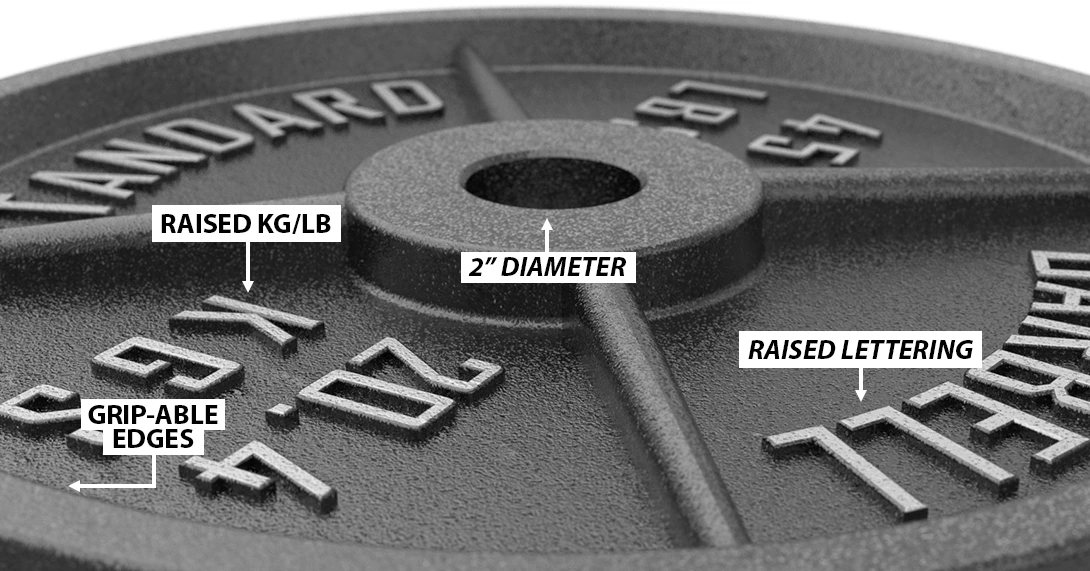
For this, what you’ll find is a lot of cheap cast-iron plates. Their center hole tolerance is all over the place.
It’s very inconsistent from plate to plate, some that fit more snug than others, but you can have some holes that are actually really wide.
😯 In fact, even a half-inch makes a huge difference.
What you’ll usually find with these bigger diameters for the center holes is the plates won’t sit flat or flush in a bar. Especially when you start to pile them up, they’ll wobble a lot.
So if you’re doing something from the floor you’ll get this tilted looking plate, some clanging and the plates will actually tend to shift more off of the bar.😔
And if you’re the type to not always use barbell collars, this could lead to plates slipping off the end, or in some instances if the tolerance is actually less than 2 inches you could actually have it be the case where you’re not able to get the plate on the bar which would be a very bad thing.
Another thing to pay attention to, after we have talked about the diameter of the plate, and center hole diameter, but that’s not where everything ends.
One of the biggest issues with cheaper cast-iron plates is the weight tolerance, allowances in it.
#3. Weight tolerance:
Like I said, “weight is not weight” in my opinion.

Because you could very easily buy a cast-iron plate that has anywhere, even up to and over a 10+/- difference from what’s listed on the plate itself.
Meaning that if you buy a 20 kg/45-pound plate, then it could weigh as little as 40 pounds or even over 50 pounds.
Again, in your mind, that might not mean much because you know what’s 5 pounds/ 2.26 kgs.
Well, think, for instance, if you had a whole barbell and you are lifting what you thought was 495 pounds, which is 545 actually.
👍 Let’s say every single weight plate you had was 5 pounds over, then you would actually be lifting about 550 pounds
Or
On the opposite side of the spectrum. Let’s say every plate was five pounds under what it should have been, you would be lifting 450 pounds.
Just think about how that might impact your lifting. 😯
If you’re going and training on what you think is 500 pounds and you think that’s your MAX. But in reality, it’s 450 pounds.
What Competitive Advantage Do You Lose When You Buy Cheap?
Then you go to a powerlifting competition to max out and you set your opener/ your segment up/ and your third attempt based on what you think your MAX is.
🔥 Now of course, it’s probably not going to be the case where you’re going to get plates that are either all under or all over.
You’re probably gonna have a hodgepodge of both on either end but then again the bottom line is you’re still not gonna have a very accurate reading on your plates and you could have one side that’s more tilted in the favor of heavy versus the left-hand side.
That much variance in a lot of these cheaper plates can really throw you off again in the grand scheme of things. 🎌
For some people, it might make a difference, but long term over time. I much rather would invest more and make sure my weights are a little bit more ACCURATE.
What’s The Difference b/w Pricer Weight Plates vs. Metal Cheap Weight Plates?
That’s where you start to see some of these machined, milled, or even calibrated plates, one of the reasons why they’re more expensive is because there are processes in the manufacturing that ensure that they’re closer to their said weight.
Allen Thrall has a great video on this:
There’re tons of instances where you find incorrect wrong sized weight plates, as you can see on the rest of social media.
As well, in fact, I’ve been to a lot of gyms that actually take like a metallic sharpie and weigh all the plates and write exactly how much they weigh. ✍️
That way if there’s a plate that’s either really heavy or really light they can kind of set it off to the side or they might mark it to make sure that people are fully aware that they’re not actually using the weight that’s indicated on it.
Nice Idea!👌
There’s always that as well, so those are some of the main things from the specs to look out for.
But in addition to that, the way the manufacturing process is you’ll find a lot of these cheaper cast-iron plates just don’t really stand up.
I’ve already noted the differences from plate to plate even if you’re buying from the same manufacturer whether it be:
- the diameter of the plate,
- the diameter of the center hole,
- the weight that it weighs itself, but also in the construction.
You’ll find a lot more apt to have chips cracks and not stand the test of time with heavy use.
Also, dropping the plates repeatedly, which for most people is part of the normal process at least controlled drops I would say from deadlifts and whatnot, you can actually have these plates break in half. 💔 Heartbreak.
Conclusion
In my opinion, even the best cheap weight plates might be a very appealing option for some because of the PRICE, iron weight plates price per kg is almost half of that compared with any calibrated metal plate.
But in the long term, it isn’t really worth it in terms of training, compared to what you can get for paying a little bit more. 💸
Speaking about price, as I mentioned, most of them are around $1 a pound if you’re going to go with these cast-iron plates. What I would very much suggest is trying to find some locally.
If you are interested to know what all types of weight plates are available, we have created a blog on them as well.
Where to get weight plates?
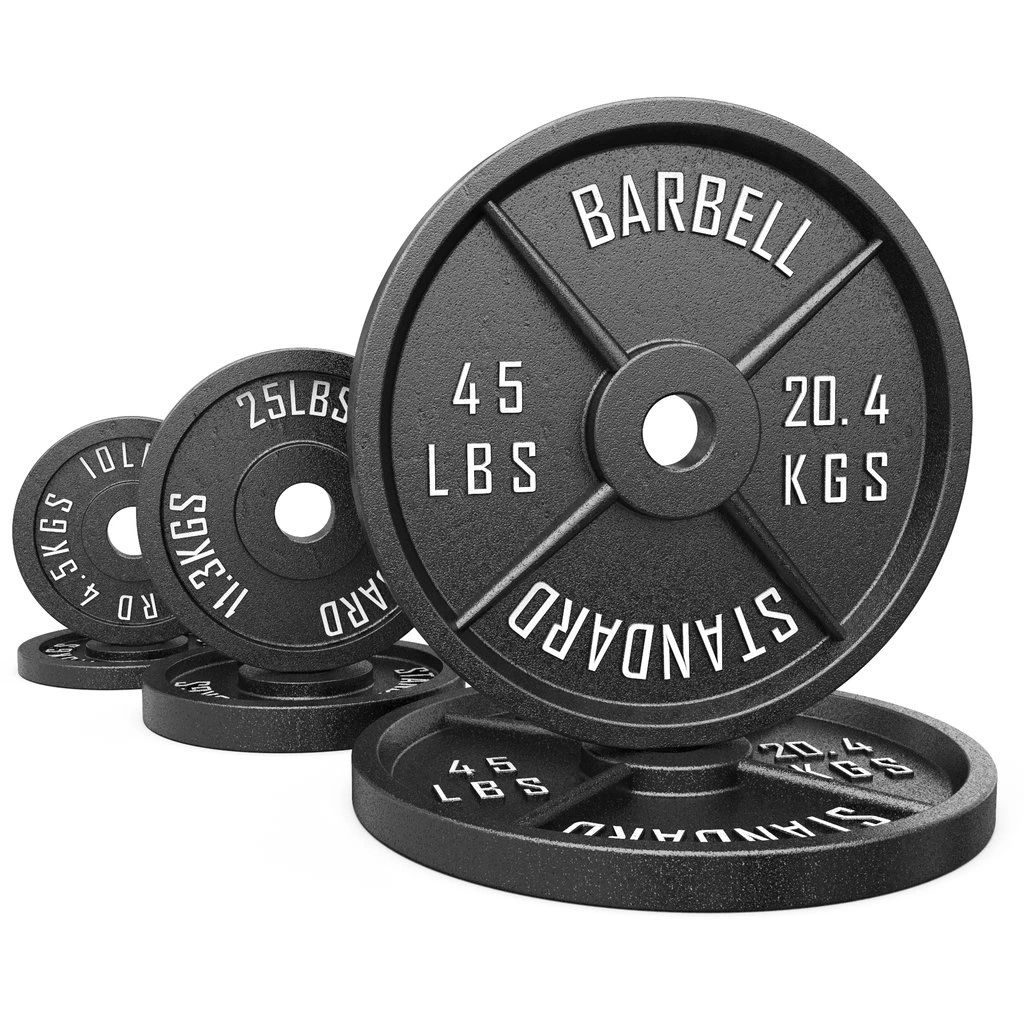
Synergee Standard Metal Weight Plates (GET 15% Instant OFF, USE CODE: MENSQUATS15)

BullrocK Cast Iron Weight Plates For Home Gym (60 kg set)
Of course, you can also get them from Amazon India/ Amazon US, or if you’re gonna get them locally or at least ones where they can be easily returned if not found accurate.
I would actually pull them out of the package and weigh them and if you have any ones that are substantially heavier or lighter than what they’re supposed to be, send them back and return them.
➡️ What I’m giving you here are extreme examples, it’s just kind of a gamble doing so, and unless you go out in a way, you really don’t know where you stand.
Other Issues You May Face when you buy cheap weight plates?
Another thing I’ve seen is some other issues with the actual casting of the iron and the plates itself.
You get a lot of sloppiness around the finishes.
There could be chunks from the plates missing.
There could be things that are overhanging.
Especially when it comes to the center hole diameter if you have some of that stuff that could not only be a hard time to get on the bar itself but it could also damage the bar.
There’s a bunch of risk with it and for me, it’s just not worth it, but again if you’re the type that doesn’t really care about some of those things that I’ve mentioned they can be a cheap and easy way to get weight into your house.
But I would probably avoid ordering them online if they come with shipping costs because if you’re getting 800 pounds of cheap weights, it’s still 800 pounds that you may potentially have to pay shipping for.
In that case, I might want to pay a little bit extra and get the better quality plates because it’s gonna probably cost the same to ship it.
Hopefully, that helps you guys with some insight please let me know in the comment section below if you have anything to say.
Sharing is caring.❤️
